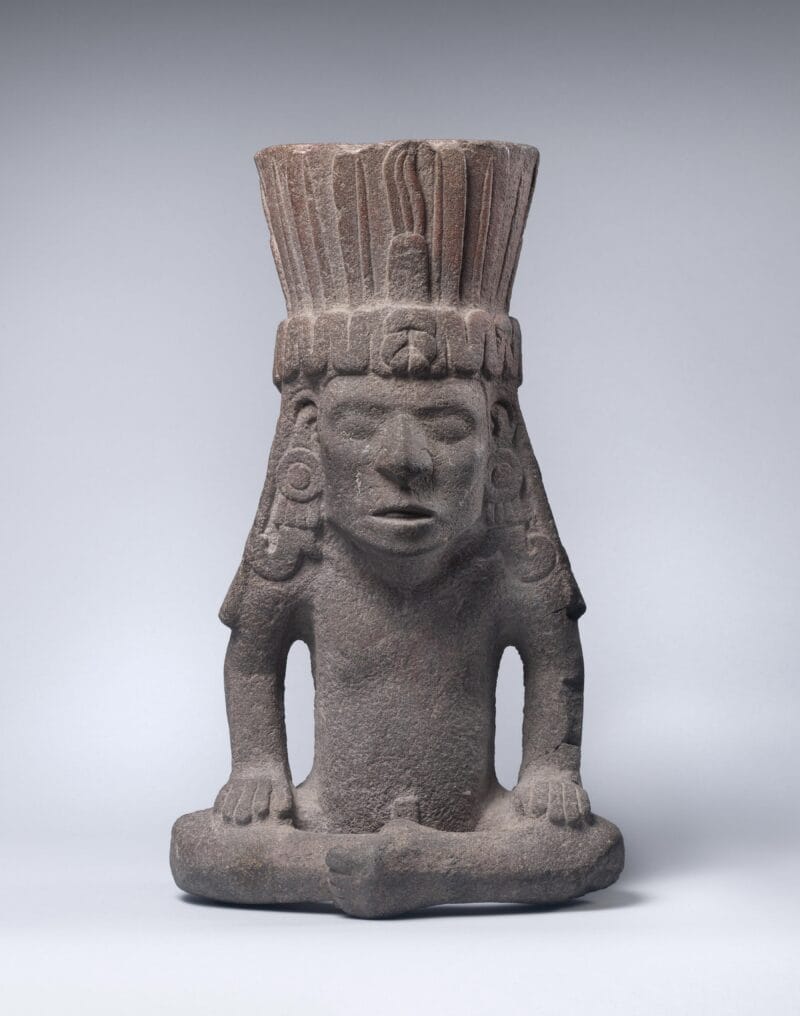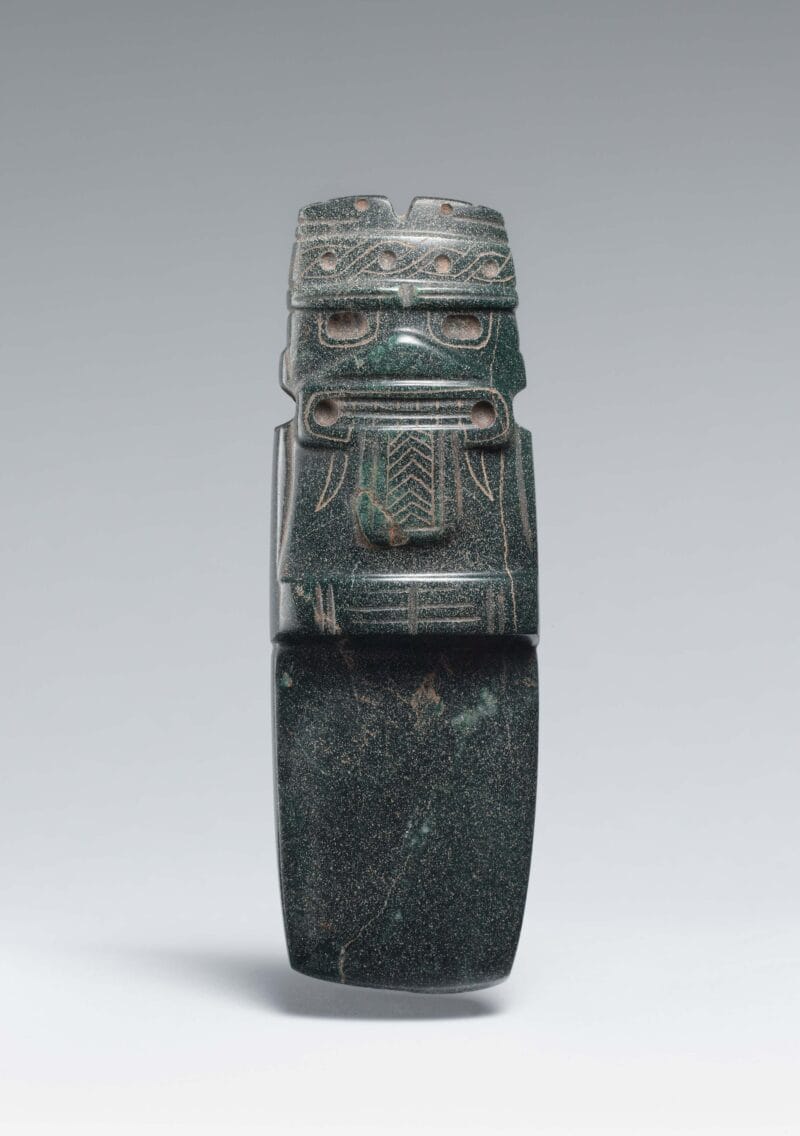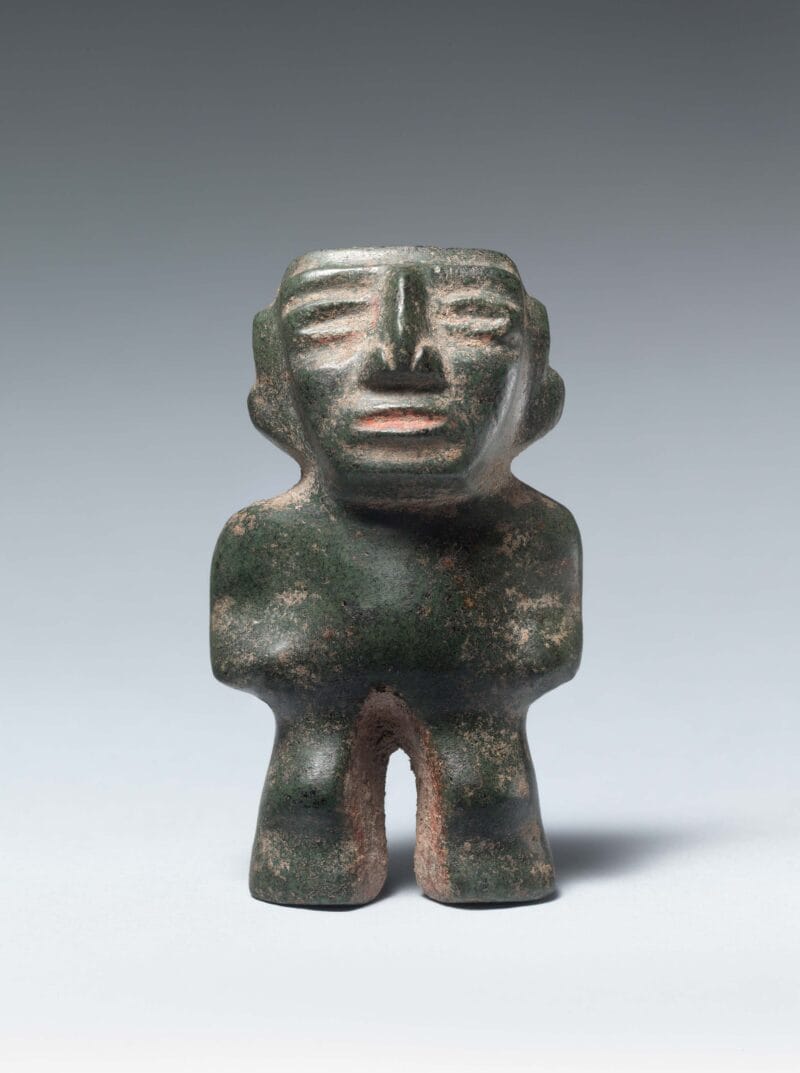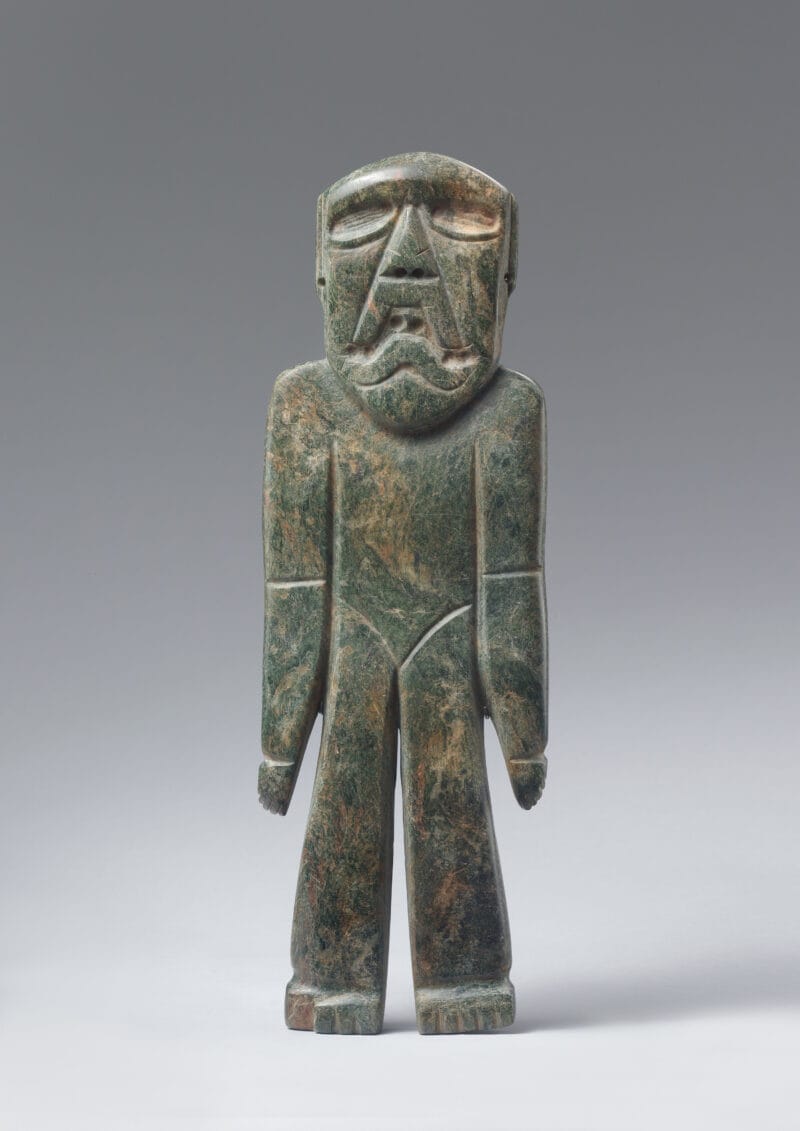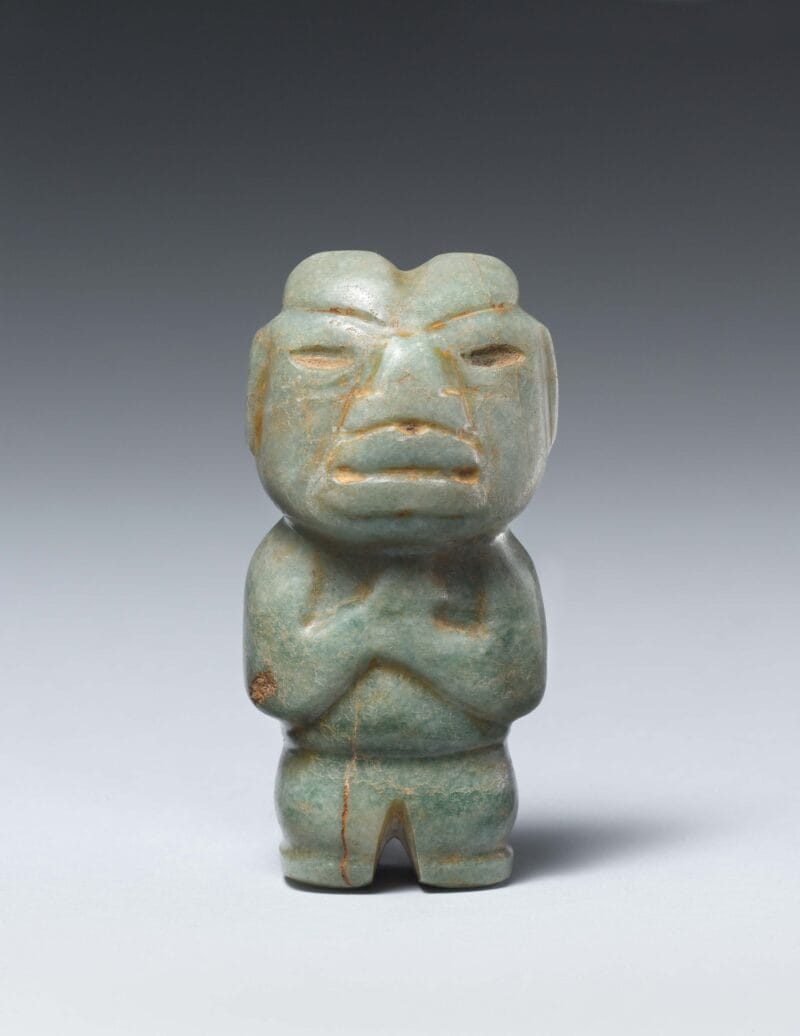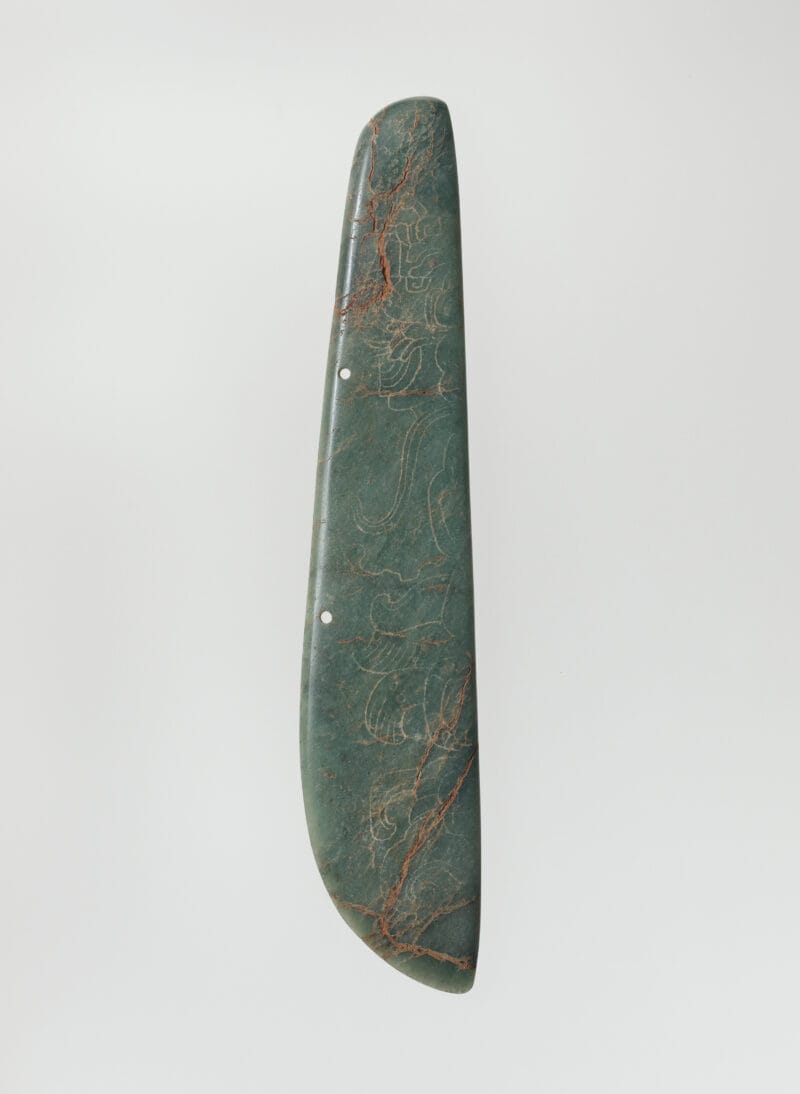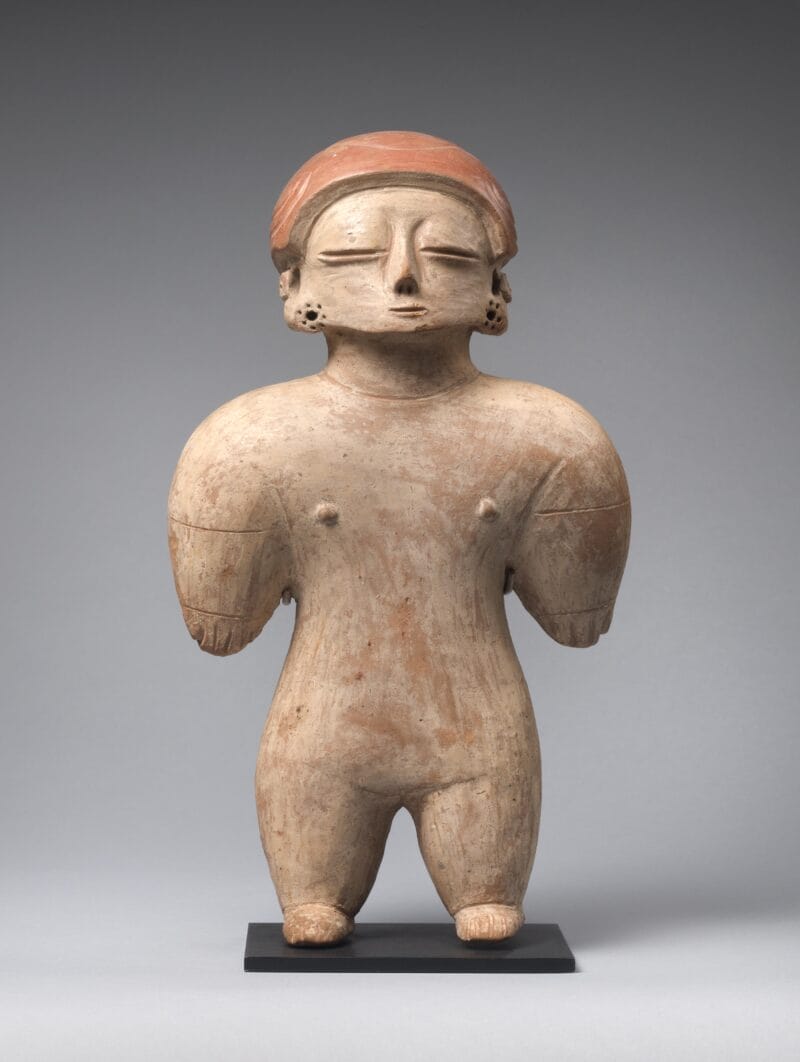
About the Object
The incised plaque here was hewn from dark green jade and most notably features a line engraving of a human or human-like figure wearing an elaborate headdress and holding a large staff or weapon. The engraving likely represents a dignitary, ruler, or deity. Given the detail and the fine skill and time necessary to create artifacts like this, it is likely that it was commissioned for elites, perhaps nobles or royalty.
Additional Information
This object was likely recycled by the Maya from an earlier disinterred Olmec celt, or hand axe. Scholars have found that this was a common practice among the Mesoamerican cultures who undertook excavations to find ancient artifacts from pre-existing cultures; the antiquity of these works was seen to add prestige and legitimacy to ruling Maya, who commissioned, traded, and held on to such ornamental carved pieces.
[Throckmorton Fine Art, New York, NY];
The Jan T. and Marica Vilcek Collection, 2006-2010;
Gift to The Vilcek Foundation, 2010;

